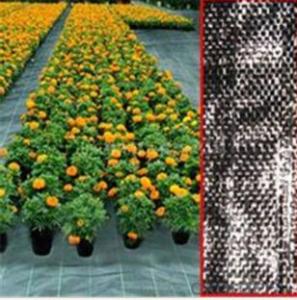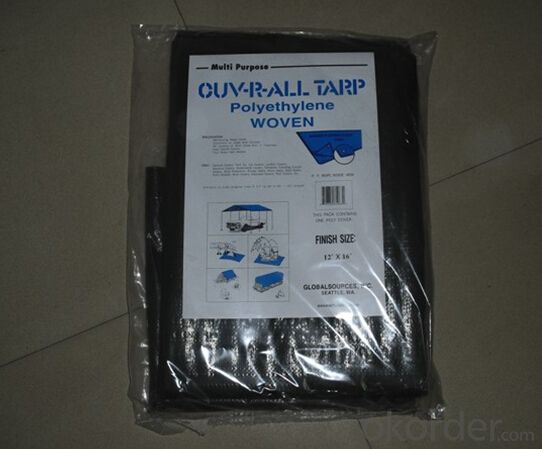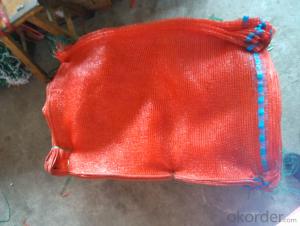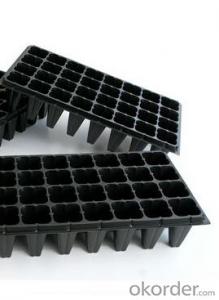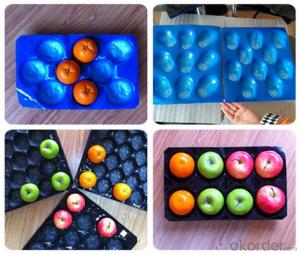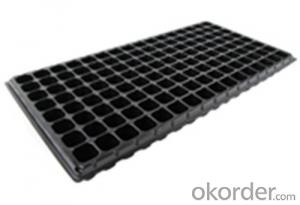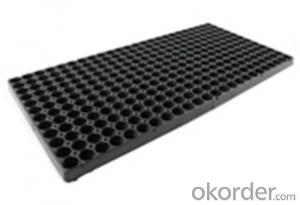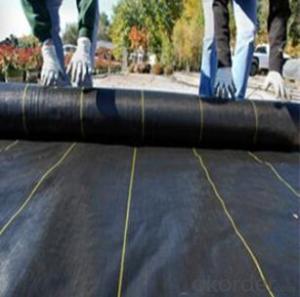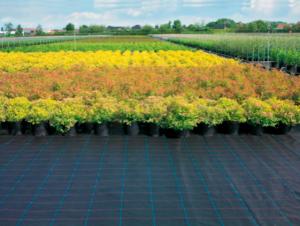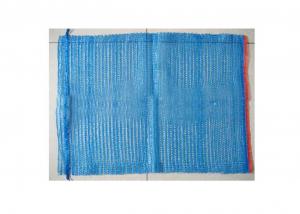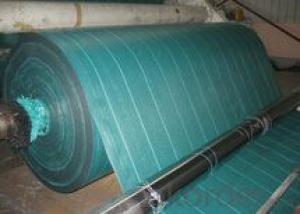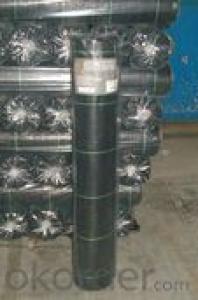weed mat for plant greenhouse earth work 100g
- Loading Port:
- China Main Port
- Payment Terms:
- TT OR LC
- Min Order Qty:
- -
- Supply Capability:
- -
OKorder Service Pledge
OKorder Financial Service
You Might Also Like
Name: PP woven fabric for weed control and water savings
Feature:
Material: PP, virgin material or recycled material
Unit weight: 140g, 175g, 180g, 200g, 230g, 260g, 300g, 350g, 420g, 480g, 670g
Width: 50cm-600cm
Length: As per ur request
Color: Black with green/white grid
Tearing strength: From 0.5 to 2.2kN
Mesh: 10*10, 12*12, 14*14
UV stabilized: Up to your request
Function:
1. Cover crops in the ground surface
2. Can prevent weeds
3. Controlling soil humidity and the temperature
4. Against the insect
5. Does not affect the growth of the crops
6. Long service life
- Q: Do nursery trays come with a heat mat?
- No, nursery trays usually do not come with a heat mat.
- Q: Can ground cover plants help improve soil quality?
- Yes, ground cover plants can help improve soil quality. These plants prevent erosion by stabilizing the soil and reducing water runoff. They also add organic matter to the soil as they decompose, improving its fertility and structure. Ground cover plants also suppress weed growth, which reduces competition for nutrients and water, further benefiting the soil.
- Q: What are the advantages of using biodegradable agricultural plastics in terms of environmental protection?
- <p>Biodegradable agricultural plastic products offer significant environmental benefits. They help reduce plastic pollution by breaking down naturally over time, thus decreasing the accumulation of non-degradable waste in landfills and the environment. These products can also improve soil health by enhancing nutrient retention and water absorption, which can lead to increased crop yields. Additionally, the use of biodegradable plastics can lower greenhouse gas emissions by reducing the reliance on fossil fuel-based plastics and the associated carbon footprint from their production and disposal. Overall, biodegradable agricultural plastics contribute to a more sustainable agricultural practice and a healthier ecosystem.</p>
- Q: What types of plastic containers are used for transporting live fish?
- The types of plastic containers commonly used for transporting live fish are fish bags, fish shipping boxes, and fish transport bags.
- Q: Do nursery trays come with a transparent cover for controlled humidity levels?
- Yes, nursery trays often come with a transparent cover to help maintain controlled humidity levels.
- Q: How do you prevent ground cover plants from spreading into swimming pools or ponds?
- One effective way to prevent ground cover plants from spreading into swimming pools or ponds is by installing a physical barrier such as a sturdy edging or a waterproof liner around the perimeter of the pool or pond. This creates a clear separation between the water body and the surrounding ground, preventing the plants from encroaching. Regular maintenance and monitoring are also key, including trimming or removing any overhanging branches or shoots that may serve as pathways for the plants to reach the water.
- Q: How do you control pests and diseases in ground cover plants?
- There are several methods to control pests and diseases in ground cover plants. One approach is to regularly inspect the plants for any signs of pests or diseases, such as discolored leaves or insect infestations. If detected, the affected plants should be promptly removed and disposed of to prevent the spread of pests or diseases. Another method is to ensure proper sanitation practices, such as regularly cleaning the garden area and removing any debris or dead plant material that may harbor pests or diseases. Additionally, practicing good cultural practices, such as providing adequate water and sunlight, can help promote plant health and reduce susceptibility to pests and diseases. In some cases, organic or chemical insecticides or fungicides may be used as a last resort, following proper instructions and precautions.
- Q: I am looking for documentaries or info on how different plastics can be recycled. Which are easiest to recycle?
- the way i understand it, all plastics are easy to recycle. Only problem is determined by the cost. The cheapest are not much subjected to recycle but dispose of unlike the thick and big ones that would command high scrap value. I hope malls would charge 500% more from the cost of their bags so consumers would be forced to reuse them or bring along their own bags when shopping.
- Q: In what year did Plastic Bags become a severe problem to the environment?
- why do you think they're a problem? They're convenient, light weight, clean, and strong. 100 of them take up less space in a landfill than a milk carton/jug. They are NOT the problem in the oceans. The problem there is plastic fishnets that have been lost by fishing boats. The nets ARE a problem, since they float and continue to catch and trap anything that goes into them. Testing has found that reusuable environmentally friendly cloth bags, used as replacements for plastic bags, soon build up high levels of bacteria as they are reused, so they need to be washed frequently which requires lots of water and detergent. In addition, at a cost of up to $5 each, buying and storing enough of them at home to handle a single trip to the grocery store can get prohibitively expensive for poor families who may use up to 20 plastic bags each trip to market to haul their groceries home. As for a year that plastic bags became a problem....it was the year immediately after plastic was touted as the salvation of the trees chopped down to create paper bags for grocery stores. Never let an environmentalist tell you what to switch to. It'll never be good enough. Just like all the environmental lawsuits now showing up in courts to stop clean energy projects (dams, windmills, solar arrays, geothermal, etc). All they want is for everyone to die and leave the planet to the frickin animals, because surely everyone can see that humans are a blight on the planet and should never have evolved.
- Q: How big are nursery trays?
- Nursery trays come in various sizes, but the most common standard size is typically around 10 inches by 20 inches.
Send your message to us
weed mat for plant greenhouse earth work 100g
- Loading Port:
- China Main Port
- Payment Terms:
- TT OR LC
- Min Order Qty:
- -
- Supply Capability:
- -
OKorder Service Pledge
OKorder Financial Service
Similar products
Hot products
Hot Searches
Related keywords
